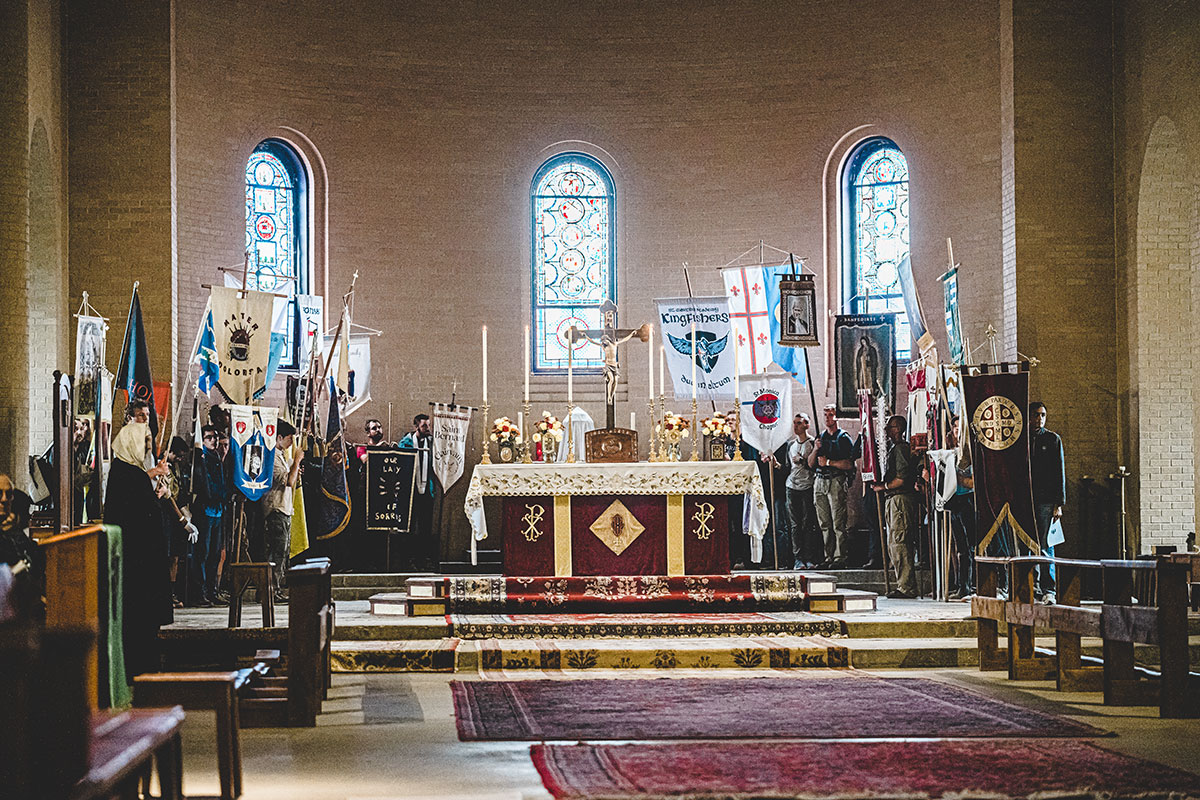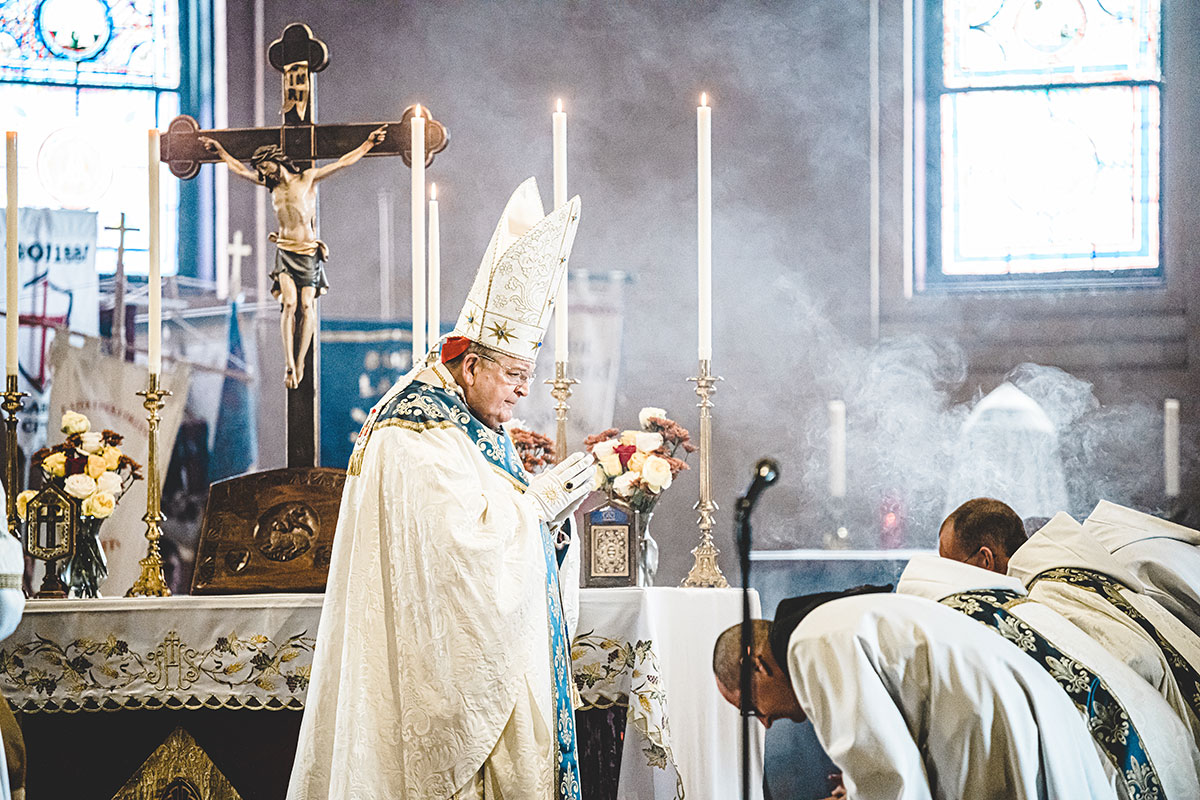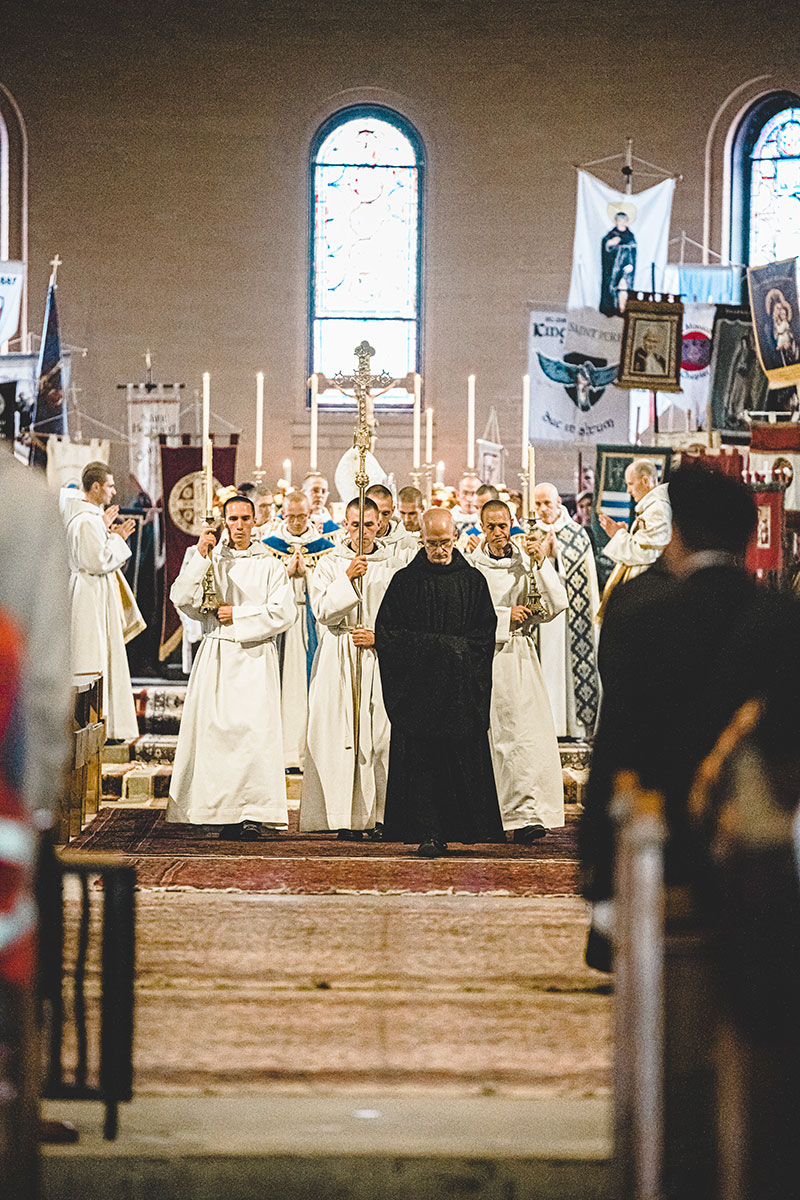Dear Friend of Clear Creek Abbey,
Poised on the threshold of a new year of God’s grace, while we prayerfully consider the challenges that confront us, whether in the world in general, in our American society (on the brink of mental, if not material civil war), or even in the Church, we are tempted by discouragement. Is our world not going to be ripped apart? As Catholic Christians, we are taught to cultivate the theological virtue of hope, but the human landscape that surrounds us seems very much to be taking the shape of a wilderness. How shall we manage?
Well, in fact, if we can free ourselves for a moment from the cultural shallows, where all things tend to descend into mud and muck, if we can lift our heads again like human beings and contemplate the stars and what God is doing, rather than what Man in his pride proposes, we might behold the help that is already at the gates. Concretely? We monks, for the love of God, live precisely in that wilderness beyond much of the influence of all-too-human schemes. And (guess what?) we are sensing a kind of gentle breeze at dawn that is the harbinger of a new era in the best sense. In one of his epic stories, J.R.R. Tolkien tells of a decisive moment, after a long night of near despair during a battle against overwhelming odds. All is nearly lost to the people attempting to hold out in a fortified castle, until there is a sudden change in the air.
But even as the gate fell, and the Orcs about it yelled, preparing to charge, a murmur arose behind them, like a wind in the distance, and it grew to a clamour of many voices crying strange news in the dawn. The Orcs upon the Rock, hearing the rumour of dismay, wavered and looked back. (The Two Towers, Helm’s Deep)
At Clear Creek we feel that change in the wind at dawn. Young people are flocking to the abbey. Young men and women, young families, young priests, young bishops even. Of course there are greybeards too! but they are precious counselors amid the inexperienced youths, who need a guiding hand. Some critics, harking back to what seemed like a more thrilling time, the time that might be described (if I dare invoke the name) as the “McCarrick generation,” remain in denial with regard to this new hope, but no one will be able to stop this new generation of young Catholics that has different perspectives. Archbishop Cordileone of San Francisco, in a recent podcast, gives us an insight into the change that is in the wind.
The Church’s teaching is very clear. The worst thing the Church can do if she wants to retain credibility in the world is to change her teaching….[That is] my experience. Let’s read the signs of the times: What is classically Catholic works. Where is the Church alive, young, and growing? It’s where what’s classically Catholic has been embraced—whether that’s in worship, in education, or in religious life. People are thirsting for the Truth. With all the means we [in the Church] have, we must expose people to Truth, Goodness and Beauty that lead to that encounter with the Truth who is Christ. I say let’s do what is classically Catholic. It attains the status of classic by definition because it has withstood the test of time. It’s beautiful in every age. It’s universal. So, it works. (Archbishop Cordileone, from his “Reason for Hope” podcast: Proclaiming the Faith in Challenging Times Dec. 2023)
One striking manifestation of this “change in the wind” turning “classic” has been the resounding success of the annual Three Hearts Pilgrimage, a 35 mile trek that culminates with a pontifical Mass in our abbey church. This is a pilgrimage that started some years ago but really “took off” toward the end of the covid crisis. People were yearning to get out and leave behind the confinement and the masks. It was in some sort an imitation of the famous Chartres Pilgrimage in France. This past year well over two thousand participated.
In some sense, the struggle for Truth is being fought in various types of Catholic media. We are all thankful for the much needed and appreciated teaching that flows through the best of these modern Catholic channels. All the same, it is not principally in these forms of modern communication, but in the sanctuary that the decisive battle takes place. That sanctuary may be that of a parish church, of a cathedral, of a monastery, or simply in the soul of the believer. But it is a spiritual battle that does not really depend on the logic of the media, which tends to be a “numbers game” and even something akin to the great American art of marketing. We have better resources than that: it will suffice to pick up a great Catholic author in one hand, and the Rosary in the other.
We need your help to finish building a monastery to last a thousand years, something beautiful for God. The material bricks and stones are not the most important element of our life, but in the case of Benedictine monasticism they do play a significant role. Above all, we need you to join your prayers to ours, so that the gentle breeze I have spoken of may continue to gather strength and become the driving force of an authentic spiritual movement at the dawn of a new era of Catholic faith and culture. If our critics and skeptics jeer (like Tolkien’s Orcs) at this seemingly quixotic enterprise, I just say to them, in the language of the Psalms, Vacate et videte: Wait and see! (Psalm 45:11 in the Vulgate)
br. Philip Anderson, abbot



















